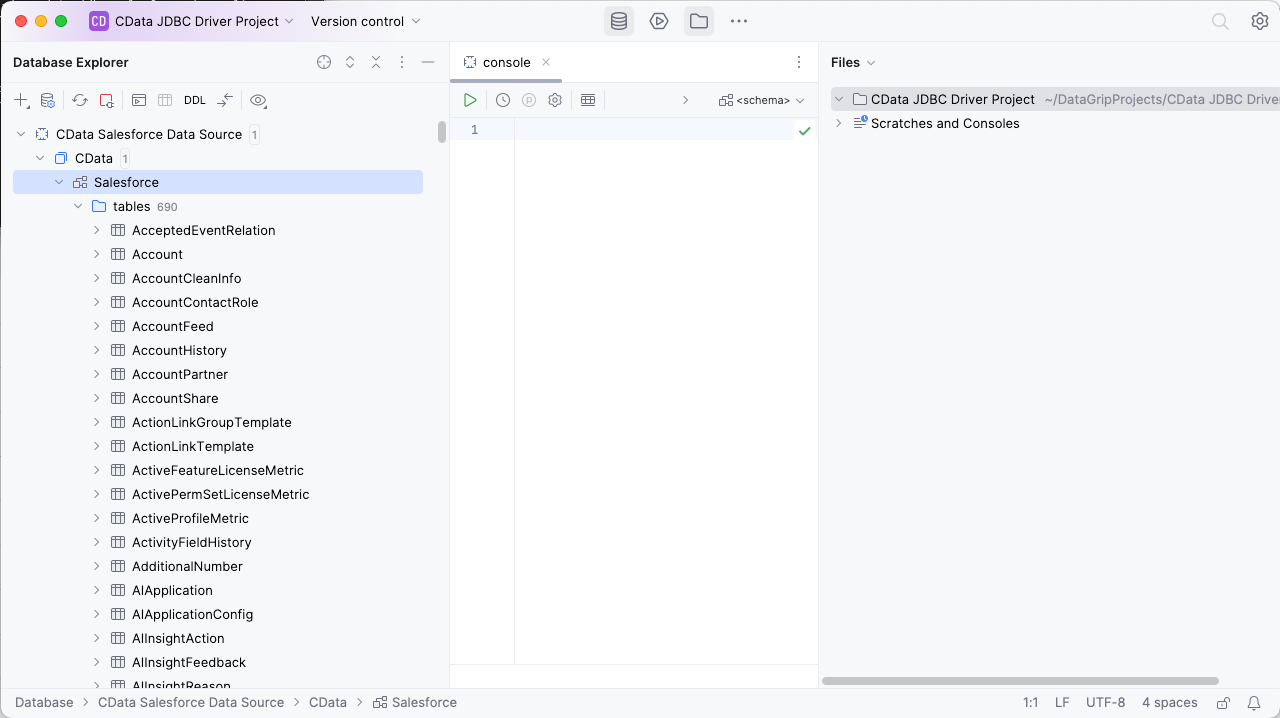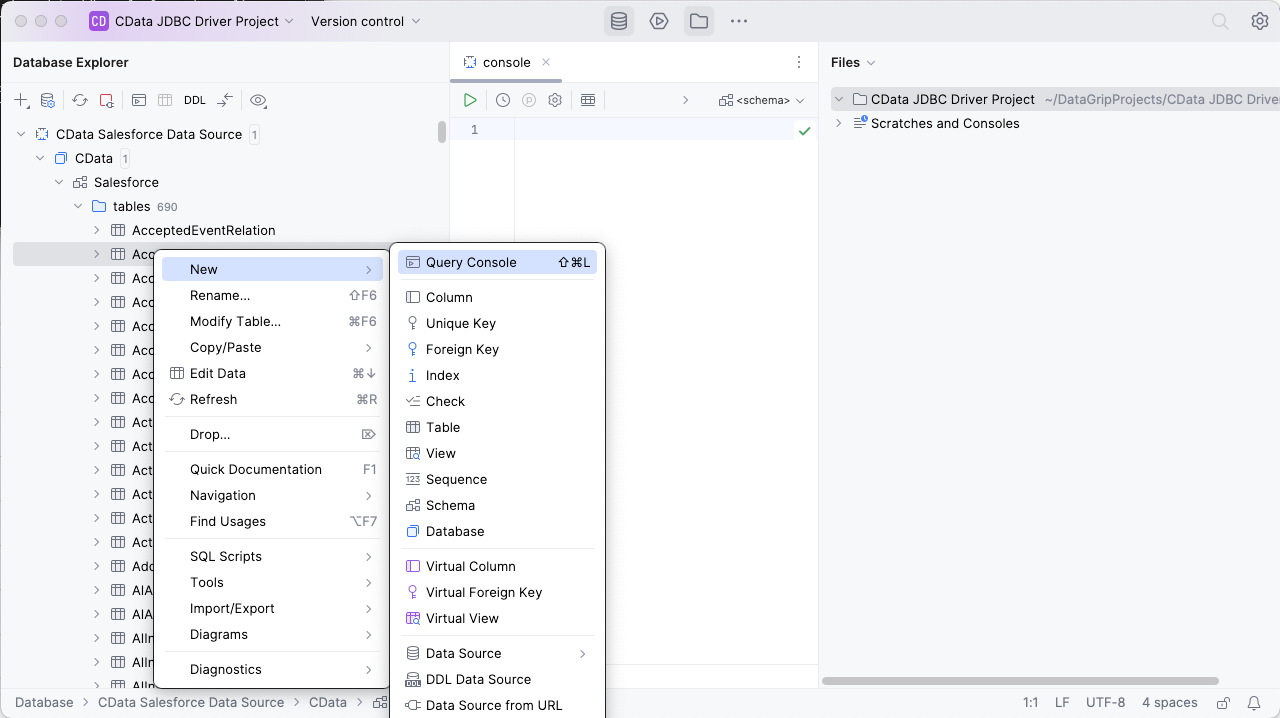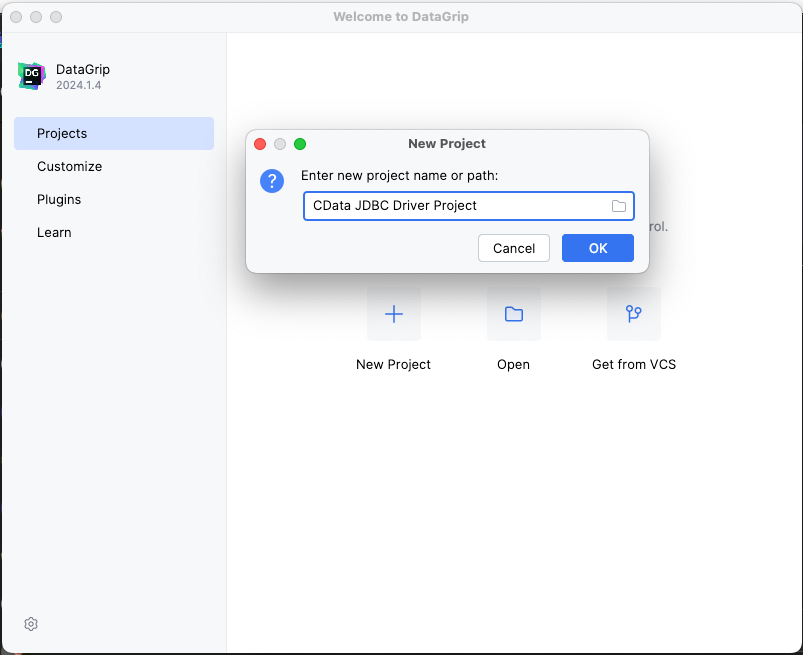Discover how a bimodal integration strategy can address the major data management challenges facing your organization today.
Get the Report →Query SAS xpt Data in DataGrip
Create a Data Source for SAS xpt in DataGrip and use SQL to query live SAS xpt data.
DataGrip is a database IDE that allows SQL developers to query, create, and manage databases. When paired with the CData JDBC Driver for SASxpt, DataGrip can work with live SAS xpt data. This article shows how to establish a connection to SAS xpt data in DataGrip.
Create a New Driver Definition for SAS xpt
The steps below describe how to create a new Data Source in DataGrip for SAS xpt.
- In DataGrip, click File -> New > Project and name the project
![Creating a new DataGrip project.]()
- In the Database Explorer, click the plus icon () and select Driver.
![Adding a new Driver.]()
- In the Driver tab:
- Set Name to a user-friendly name (e.g. "CData SAS xpt Driver")
- Set Driver Files to the appropriate JAR file. To add the file, click the plus (), select "Add Files," navigate to the "lib" folder in the driver's installation directory and select the JAR file (e.g. cdata.jdbc.sasxpt.jar).
- Set Class to cdata.jdbc.sasxpt.SASXpt.jar
Additionally, in the advanced tab you can change driver properties and some other settings like VM Options, VM environment, VM home path, DBMS, etc - For most cases, change the DBMS type to "Unknown" in Expert options to avoid native SQL Server queries (Transact-SQL), which might result in an invalid function error
- Click "Apply" then "OK" to save the Connection
![A configured Driver (Salesforce is shown).]()
Configure a Connection to SAS xpt
- Once the connection is saved, click the plus (), then "Data Source" then "CData SAS xpt Driver" to create a new SAS xpt Data Source.
- In the new window, configure the connection to SAS xpt with a JDBC URL.
Built-in Connection String Designer
For assistance in constructing the JDBC URL, use the connection string designer built into the SAS xpt JDBC Driver. Either double-click the JAR file or execute the jar file from the command-line.
java -jar cdata.jdbc.sasxpt.jarFill in the connection properties and copy the connection string to the clipboard.
Connecting to Local SASXpt Files
You can connect to local SASXpt file by setting the URI to a folder containing SASXpt files.
Connecting to S3 data source
You can connect to Amazon S3 source to read SASXpt files. Set the following properties to connect:
- URI: Set this to the folder within your bucket that you would like to connect to.
- AWSAccessKey: Set this to your AWS account access key.
- AWSSecretKey: Set this to your AWS account secret key.
- TemporaryLocalFolder: Set this to the path, or URI, to the folder that is used to temporarily download SASXpt file(s).
Connecting to Azure Data Lake Storage Gen2
You can connect to ADLS Gen2 to read SASXpt files. Set the following properties to connect:
- URI: Set this to the name of the file system and the name of the folder which contacts your SASXpt files.
- AzureAccount: Set this to the name of the Azure Data Lake storage account.
- AzureAccessKey: Set this to our Azure DataLakeStore Gen 2 storage account access key.
- TemporaryLocalFolder: Set this to the path, or URI, to the folder that is used to temporarily download SASXpt file(s).
![Using the built-in connection string designer to generate a JDBC URL (Salesforce is shown.)]()
- Set URL to the connection string, e.g.,
jdbc:sasxpt:URI=C:/folder; - Click "Apply" and "OK" to save the connection string
![A configured Data Source (Salesforce is shown).]()
At this point, you will see the data source in the Data Explorer.
Execute SQL Queries Against SAS xpt
To browse through the SAS xpt entities (available as tables) accessible through the JDBC Driver, expand the Data Source.

To execute queries, right click on any table and select "New" -> "Query Console."

In the Console, write the SQL query you wish to execute. For example: SELECT Id, Column1 FROM SampleTable_1 WHERE Column2 = '100'

Download a free, 30-day trial of the CData JDBC Driver for SASxpt and start working with your live SAS xpt data in DataGrip. Reach out to our Support Team if you have any questions.











